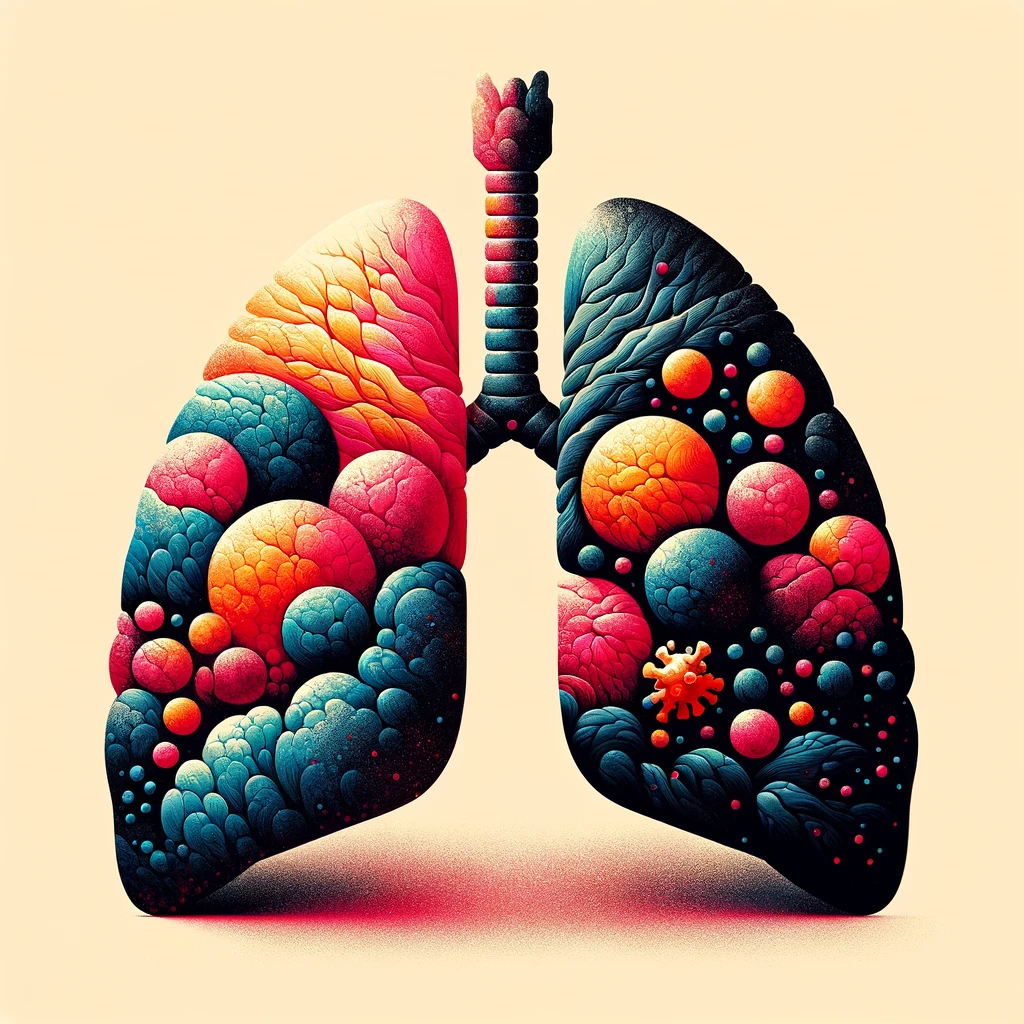Understanding Lung Cancer: Types, Signs, Diagnostics, Stages, Treatment, and Outlook

Dr. Craig Smith, MD
4 Min read
Lung cancer, a pervasive and challenging disease, manifests in various forms, affecting millions of lives globally each year. This article aims to offer a comprehensive exploration of lung cancer, encompassing its types, signs, diagnostics, stages, treatment options, and the overall outlook for patients. As we unravel the complexities of this disease, advancements in medical science continue to shape a more nuanced understanding and improved outcomes for those grappling with lung cancer.
I. Types of Lung Cancer:
Lung cancer is broadly categorized into two main types based on the microscopic appearance of the tumor cells:
- Non-Small Cell Lung Cancer (NSCLC): Accounting for approximately 85% of all lung cancer cases, NSCLC comprises various subtypes, including:
- Adenocarcinoma: Commonly found in the outer regions of the lung, this subtype often occurs in non-smokers and is more prevalent in women.
- Squamous Cell Carcinoma: Typically located in the central part of the lung, squamous cell carcinoma is strongly associated with smoking.
- Large Cell Carcinoma: This less common subtype can occur in any part of the lung and tends to grow and spread quickly.
- Small Cell Lung Cancer (SCLC): Comprising about 15% of lung cancer cases, SCLC is characterized by small, round cells. This type of lung cancer is often more aggressive and tends to spread rapidly. SCLC is strongly linked to cigarette smoking.
Understanding the specific type of lung cancer is crucial for tailoring an effective treatment plan.
II. Signs and Symptoms:
Recognizing the signs and symptoms of lung cancer is fundamental for early detection and effective intervention. While symptoms may not manifest in the early stages, the following signs may become apparent as the disease progresses:
- Persistent Cough: A chronic cough that persists or changes in character can be indicative of lung cancer, especially in smokers.
- Shortness of Breath: Increasing difficulty in breathing may occur as the tumor affects lung function.
- Chest Pain: Pain or discomfort in the chest area may result from the tumor impacting nearby tissues.
- Unexplained Weight Loss: Significant weight loss without apparent cause may signal the body's energy being redirected to combat cancer.
- Fatigue: Persistent fatigue unrelated to activity levels may be a consequence of the body fighting the cancer.
- Hoarseness: Changes in the voice or persistent hoarseness can occur if the cancer affects the nerves controlling the vocal cords.
- Difficulty Swallowing: Tumors located in or near the esophagus may cause difficulty swallowing, known as dysphagia.
- Recurrent Respiratory Infections: A weakened immune system due to cancer can lead to more frequent respiratory infections.
III. Diagnostics:
Early detection significantly improves the chances of successful lung cancer treatment. A variety of diagnostic methods are employed to confirm the presence of lung cancer, determine its type, and assess its stage:
- Imaging Tests: X-rays, CT scans, and PET scans are crucial for visualizing abnormalities in the lungs, helping identify the location, size, and potential spread of tumors.
- Biopsy: Obtaining a small tissue sample from the lung for laboratory analysis is a key diagnostic step. Biopsies can be performed through various methods, including needle biopsy or bronchoscopy.
- Sputum Cytology: Examination of coughed-up mucus for cancer cells provides additional diagnostic information.
- Bronchoscopy: Using a thin, flexible tube with a camera to examine the airways and collect tissue samples for analysis.
IV. Stages of Lung Cancer:
Lung cancer staging is pivotal for treatment planning and prognosis. The stages are categorized as follows:
- Stage 0: Cancer is localized and has not spread beyond the inner lining of the lung.
- Stages I and II: Localized cancer with increasing size and potential invasion of nearby tissues.
- Stage III: Advanced cancer that may involve nearby lymph nodes and structures.
- Stage IV: Cancer has spread to distant organs, making it metastatic.
V. Treatment Options:
Treatment approaches for lung cancer are diverse and depend on factors such as cancer type, stage, and the overall health of the patient. Common treatment modalities include:
- Surgery: Removal of the tumor and, in some cases, part or all of the lung.
- Radiation Therapy: Using high-energy rays to target and kill cancer cells.
- Chemotherapy: Administering drugs to kill or impede the growth of cancer cells.
- Targeted Therapy: Using drugs that target specific molecules involved in cancer growth.
- Immunotherapy: Enhancing the body's immune system to fight cancer cells.
VI. Outlook and Prognosis:
The prognosis for lung cancer varies based on factors such as stage, type, and the patient's overall health. Early detection and advancements in treatment options, including targeted therapies and immunotherapy, have improved outcomes for some patients. Despite the challenges posed by the aggressive nature of lung cancer, ongoing research and innovative therapies provide hope for enhanced patient survival and quality of life.
VII. Conclusion:
Lung cancer, with its diverse types and complex manifestations, necessitates a comprehensive understanding for effective management. Early detection, facilitated by awareness of signs and symptoms, coupled with advancements in diagnostics and treatment modalities, is paramount. As we continue to navigate the intricate landscape of lung cancer, collaborative efforts from healthcare professionals, researchers, and the community play a pivotal role in advancing knowledge and improving outcomes. Lung cancer, while formidable, is not insurmountable, and a holistic approach encompassing prevention, early detection, and innovative treatments holds promise for a brighter future for those affected by this challenging disease.